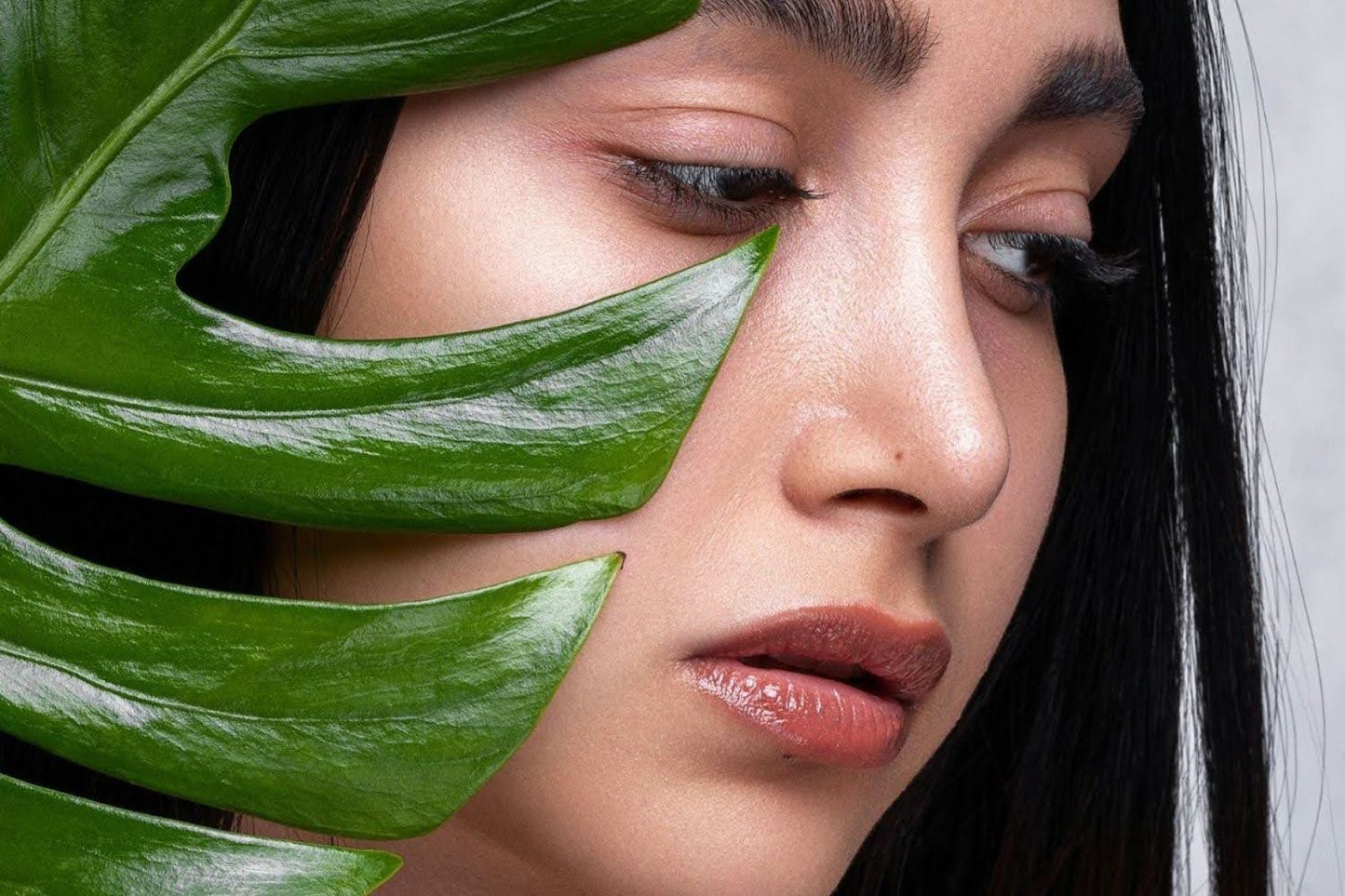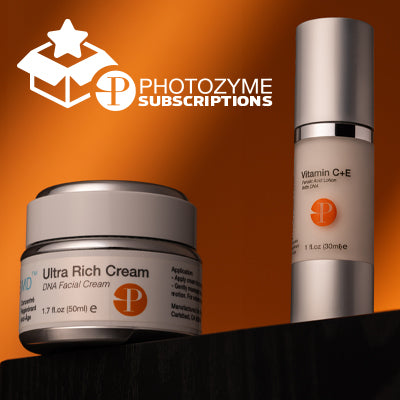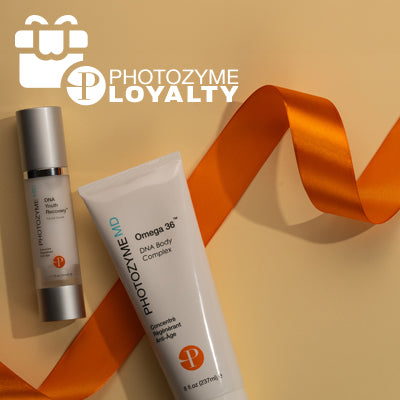
Key Takeaways:
- Developing a Teen-Specific Skincare Routine: Establishing a skincare routine tailored to teenage skin helps combat common issues like acne and sensitivity while setting the foundation for long-term skin health.
- Nourishing Your Skin from the Inside Out: A balanced diet rich in water, antioxidants, and healthy fats can enhance the skin's appearance and resilience against environmental factors.
- Daily Essentials for Healthy, Radiant Skin: Daily skincare essentials, including gentle cleansing, moisturizing, and sun protection, are crucial for maintaining healthy, radiant skin through adolescence and beyond.
At Photozyme, we recognize that understanding your skin and using the right products is crucial for effective teenage skincare. With innovative DNA repair technology and a strong dedication to maintaining skin health, we provide solutions to protect your skin from acne, sensitivity, and environmental stressors.
Maintaining clear, radiant skin during teenage years can be exciting and daunting. During this transformative period, a girl's skin undergoes numerous changes, influenced by hormonal fluctuations, often leading to skincare challenges like acne, oiliness, and sensitivity. However, a well-tailored skincare routine can resolve these issues, boost confidence, and encourage a positive self-image among teenage girls.
In this article, we will guide you through an optimal skincare regimen specifically crafted to meet the needs of young, evolving skin while embracing the principles of protection and rejuvenation.
Understanding Teenage Skin
Teenage skin uniquely differs from adult skin, primarily due to hormonal changes that can significantly impact its condition and appearance. As teenagers hit puberty, increased levels of hormones such as testosterone trigger the sebaceous glands to produce more sebum, the oily substance that lubricates the skin. While sebum is essential for keeping the skin healthy and supple, excessive production can lead to common adolescent skin issues, including oily skin, enlarged pores, acne, and blackheads.
Understanding the unique characteristics of teenage skin is vital in developing an effective skincare routine that addresses these specific issues without over-stripping the skin, which can lead to its problems. It is a delicate balance to maintain, where the goal is to moderate sebum production, encourage proper cell turnover, and protect the skin from environmental aggressors. This knowledge serves as the groundwork for building a skincare routine tailored to the needs of teenage girls, promoting a clear, healthy complexion throughout their adolescent years.
Common Skin Problems For Teens
During the teenage years, the skin undergoes numerous changes that can lead to various skin issues. Understanding these common problems can help address them effectively as part of a comprehensive skincare routine for teenage girls.
Acne
Acne is perhaps the most prevalent skin problem among teenagers. It is caused by the overproduction of oil from sebaceous glands. Hormonal changes are significant, often leading to clogged pores and outbreaks of pimples, blackheads, and whiteheads. Maintaining a regular cleansing routine and using non-comedogenic products can help manage acne.
Oily Skin
Many teenagers struggle with oily skin due to hormonal fluctuations that stimulate excess sebum production. Oily skin can make the face appear shiny and contribute to acne issues. Gentle cleansers and oil-free moisturizers can help balance skin moisture and control excess oil.
Dry Skin
While oily skin is common, some teenagers experience dry or flaky skin. This can be due to genetic factors, environmental conditions, or harsh skincare products that strip the skin of its natural oils. Hydrating with appropriate moisturizers and drinking plenty of water can help alleviate dryness.
Sensitivity
Increased exposure to various products and environmental factors during the teenage years can lead to sensitive skin. Symptoms can include redness, itching, and irritation. It’s essential for teens to use hypoallergenic, fragrance-free products to minimize potential irritants.
Sun Damage
Exposure to UV rays can cause immediate issues like sunburn and long-term problems such as early signs of aging and an increased risk of skin cancer. Teenagers should be encouraged to use sunscreen regularly, especially when involved in outdoor activities, to protect their skin from harmful UV rays.
Diet And Skin Health: What Teenage Girls Should Know
Maintaining a healthy diet is crucial for everyone, especially teenage girls still growing and developing. The skin, the body's largest organ, reflects overall health and is directly influenced by what we eat.
Here are some nutrients and dietary tips that can enhance skin health:
Hydration
Water is essential for maintaining skin hydration. Well-hydrated skin appears plumper, less prone to flaking, and more vibrant. Teenage girls should aim to drink at least 8-10 glasses of water daily to keep their skin hydrated and help flush out toxins that can cause breakouts.
Antioxidants
Foods rich in antioxidants can help protect the skin from damage caused by free radicals, molecules that can lead to premature aging and skin cell damage. Berries, nuts, spinach, and sweet potatoes are great sources of antioxidants. Incorporating these foods into a daily diet can help maintain the skin's elasticity and prevent damage.
Healthy Fats
Omega-3 fatty acids in fish like salmon, flaxseeds, and walnuts are essential for maintaining healthy skin. They help regulate oil production, enhance hydrated skin, and even delay skin aging by preventing wrinkles and reducing acne inflammation.
Vitamins
- Vitamin E is crucial for skin health as it protects the skin from oxidative stress and UV radiation damage. Nuts and seeds are excellent sources of vitamin E.
- Vitamin C is a vital component in the production of collagen, which helps maintain skin elasticity and can reduce the appearance of wrinkles. Citrus fruits, strawberries, bell peppers, and broccoli are rich in vitamin C.
- Vitamin A supports skin cell turnover, which is vital for glowing, youthful skin. Carrots, sweet potatoes, and dark leafy greens are good sources of vitamin A.
Avoid Sugary And Processed Foods
Excessive consumption of sugary and highly processed foods can trigger hormonal imbalances and lead to breakouts. Teenage girls should try to minimize their intake of these foods to maintain clear and healthy skin.
How To Read Skincare Product Labels
Understanding skincare product labels is crucial for maintaining healthy skin, especially for teenagers whose skin can be particularly sensitive to harsh ingredients.
Here’s a simple guide to interpreting these labels:
Ingredient List
The ingredients are listed in descending order of concentration. The first five ingredients usually constitute about 80% of the product, so pay special attention to these. Teenagers should look for non-comedogenic ingredients that won’t clog pores, such as hyaluronic acid, niacinamide, and glycerin which are beneficial for young, acne-prone skin.
Expiration Date
Products past their expiration date can be ineffective or even harmful. This is especially true for products that contain active ingredients like retinoids or vitamin C, which can deteriorate over time. Ensure the product is within its effective timeframe to ensure peak performance and safety.
Symbols To Note
- The open jar icon (PAO, Period After Opening): This symbol indicates how long the product remains effective after it has been opened, typically expressed in months (e.g., 12M for 12 months).
- The hand and book symbol: Indicates that the product comes with further instructions or warnings that might not fit on the label.
- The leaping bunny or cruelty-free icon: Shows that no animal testing was used in the development of the product, an important factor for many consumers today.
SPF Rating
The SPF rating measures the degree of protection against UVB rays for sun protection products. Given the importance of DNA repair and sun damage prevention, Photozyme emphasizes using products with sufficient SPF to shield and protect young skin from long-term damage.
Certifications
Look for labels that signify quality and safety standards, such as "dermatologist-tested," "hypoallergenic," or "non-comedogenic," or for specific certifications like Ecocert for natural and organic ingredients. This can be particularly important for teenagers with sensitive skin.
Night-time Skincare Rituals
Establishing a nighttime skincare routine is crucial for teenage girls, as it helps repair and rejuvenate the skin after a long day's exposure to environmental stressors.
Here's a step-by-step guide to a perfect evening ritual that promotes skin health and appearance:
Cleansing
Begin by using a gentle cleanser to remove makeup and impurities accumulated throughout the day. This step is vital to prevent clogged pores and breakouts.
Toning
Follow up with a mild, alcohol-free toner to remove residual dirt or makeup, balance the skin's pH level, and refine pores. This prepares the skin for better absorption of other products.
Treatment Serums
Apply a serum tailored to your skin type or specific concerns, such as acne or hyperpigmentation. Select a product rich in antioxidants, such as Vitamin C or E, which help fight free radical damage overnight.
Moisturizing
Hydration is key, especially overnight, as it aids in the skin's natural repair process. Use a lightweight, non-comedogenic moisturizer to hydrate your skin without clogging pores.
Spot Treatment
If you have particular areas that need attention, such as pimples or dark spots, apply a targeted treatment specifically designed for these issues.
Lip Care
Don't forget about your lips. Apply a hydrating lip balm to moisturize and repair the delicate skin on your lips overnight.
Final Thoughts
At Photozyme, we understand the importance of laying a strong foundation for skin health from a young age. Our products, designed with cutting-edge DNA repair technologies, offer a robust framework for addressing the first signs of aging and preventive care. By incorporating these advanced solutions into your daily routine, you can take proactive steps toward maintaining a youthful and radiant complexion well into the future.
Adopting a skincare routine as a teenage girl is not just about looking good; it's a fundamental step in fostering long-term skin health. Starting early with a regimen that includes cleansing, moisturizing, and sun protection can significantly impact the skin's appearance and its resilience against future damage. It's essential to remember that the products you choose should be gentle and suitable for your skin type, emphasizing the prevention of sun damage and the enhancement of the skin's natural repair mechanisms.
Read also:
- DNA Repair Enzymes In Skincare: A Scientific Overview
- Choosing Skincare Products Following The Beauty Pyramid
- Spring Clean Your Routine! Essential Tips for Glowing Skin
Frequently Asked Questions About Skincare Routine For Teenage Girls
What is a good skincare routine for teenage girls?
Teenage girls' skincare routine should include gentle cleansing, moisturizing, and applying sunscreen daily. It's helpful to use products formulated for their specific skin type, such as oily, dry, or combination. Adding a mild exfoliant a few times a week can also benefit the turnover of skin cells and keep the skin clear.
Why is skincare important for teenagers?
Hormonal changes during the teenage years can lead to increased sebum production and potential skin issues like acne. Establishing a good skincare routine helps manage these changes by keeping the skin clean, balanced, and protected from environmental stressors.
How often should teenagers cleanse their skin?
Teenagers should cleanse their skin twice daily, in the morning and at night. This helps to remove impurities, excess oil, and makeup, preventing clogged pores and breakouts.
Should teenagers use a toner?
Yes, teenagers can benefit from using a toner. It helps restore the skin’s natural pH balance, remove residual impurities after cleansing, and control excess oil. Opt for alcohol-free toners to avoid over-drying the skin.
What ingredients should teenagers look for in skincare products?
Teenagers should look for non-comedogenic ingredients that won't clog pores. Salicylic acid is great for acne-prone skin, while hyaluronic acid is excellent for hydration. Antioxidants like vitamin C and niacinamide help protect and brighten the skin.
What type of cleanser is best for teenage skin?
A gentle, water-soluble cleanser is best for teenage skin. It should effectively clean without stripping the skin of its natural oils. Foam or gel cleansers are popular choices for oily or combination skin types.
Are exfoliants safe for teenage skin?
Yes, exfoliants are safe for teenage skin, but they should be used sparingly to avoid irritation. Chemical exfoliants like AHAs or BHAs are preferable over physical scrubs as they are gentler and help to clear pores effectively.
How often should teenagers exfoliate?
Teenagers should exfoliate their skin once or twice a week, depending on their skin type and sensitivity. Over-exfoliation can strip the skin of essential oils and lead to irritation.
What type of moisturizer should teenagers use?
Teenagers should use an oil-free, lightweight moisturizer to keep their skin hydrated without causing breakouts. Look for products that contain hydrating ingredients like glycerin or ceramides, which help maintain the skin's natural barrier.
Is sunscreen necessary for teenagers?
Absolutely, sunscreen is essential for everyone, including teenagers. Daily application of at least SPF 30 will protect their skin from harmful UV rays, prevent sun damage, and reduce the risk of early skin aging and skin cancer.




